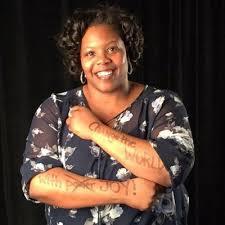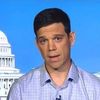
This is Part 2 of a 3-part series on Kaya Henderson’s leadership of DCPS. [Part 1]
After six years as head of D.C. Public Schools, Kaya Henderson steps down Friday, claiming she’s turned around a troubled school system.
“DCPS has become the fastest–improving urban school district in the country,” Henderson’s DCPS bio states.
But the facts tell a different story. It’s one of slight overall improvement (largely due to gentrification and changing demographics), masking a disturbing reality: under Henderson the achievement gap has grown and D.C.’s most at-risk students have fallen even farther behind.
“A frequent criticism of Henderson,” writes City Paper’s Jeffrey Anderson, “is that she promotes progress by highlighting aggregate student test scores that either do not account for or obscure one of the widest achievement gaps in the country.”
“Looking at the system as a whole the district has maintained a modest improvement for all students,” Washington Teachers’ Union president Elizabeth Davis wrote in response to the first piece in this series.
But when we disaggregate this data, a more compelling story emerges: students and teachers throughout the district are not receiving the needed resources that would aid in mitigating the scourge of multi-generational poverty.
Mayoral Control
Henderson arrived at DCPS in 2007 when her close friend Michelle Rhee took the reins of the school system.
Their arrival coincided with D.C. switching to mayoral control of schools, which disempowered the elected school board, and gave Rhee and Henderson unprecedented authority.
This power grab was justified as necessary to address D.C.’s wide achievement gaps: between black/Latino and white, and lower and higher-income students. But after Rhee and Henderson’s combined near-decade atop DCPS, the achievement gaps haven’t narrowed. In fact they’ve widened.
The gaps “are huge – and years of corporate reform didn’t stop them from widening,” writes Valerie Strauss, a rare voice willing to challenge Henderson at the Washington Post.
The Associated Press similarly found that under Henderson the achievement gap “remained persistently high and has increased by some measures.”
“The gaps between wealthy and poor remain huge–and have actually increased–under Rhee and Henderson,” wrote former PBS reporter John Merrow, citing DCPS scores on the test known as “the nation’s report card.”
Looking at data from this test (officially the National Assessment of Educational Progress or NAEP), the Washington Teachers’ Union concluded: “Not only have the gaps grown, they are growing at an unprecedented rate.”
Shortchanging ‘At-risk’ Students
In an effort to narrow D.C.’s achievement gap, the city began allocating additional funding for ‘at-risk’ students in the 2014/15 school year, providing DCPS schools with an extra $2,000 per at-risk student.
D.C. defines at-risk students as those who are eligible for nutritional or financial assistance, in foster care or homeless, or one or more years behind grade level in high school.
The funding, which totals $47 million this year, is meant to provide increased assistance to schools with greater needs.
But a 2015 report from the D.C. Fiscal Policy Institute (DCFPI) showed funding flowing disproportionately to schools “with lower levels of need.”
During the 2014/15 academic year, schools where more than 70 percent of students were at-risk received $1,744 per an at-risk pupil, according to civil rights attorney and school budget expert Mary Levy. Meanwhile schools where less than 10 percent of students were at-risk got $7,686 per pupil; that’s more than four times higher.
At the extremes, Stanton Elementary School in southeast D.C., where poverty is high, received just $319 per an at-risk student in 2014/15, while Capitol Hill Montessori received $19,298.
“The Council finally tried to do the right thing about the achievement gap,” said fifth grade DCPS teacher Chris Bergfalk, but the funding “disproportionately went to kids who didn’t need it.”
While DCPS’s imbalance in disbursing at-risk funding has lessened in subsequent years, problems remain. A 2016 follow up report by DCFPI showed “nearly half of the ‘at-risk’ funding… is being used to support core functions,” like extended school years, athletics and arts; which, while important, are supposed to be covered in the general budget.
Testifying at a Council hearing, Henderson defended DCPS’s use of at-risk funds, and questioned the “pathology” of critics who “want to remediate [students] to death.”
Meanwhile, Henderson’s commitment to narrowing the achievement gap - the basis for why she and Rhee were given such unprecedented power - has fallen by the wayside, notes reporter Jeffrey Anderson.
“In Washington, D.C., we have the greatest income inequality in the country,” explained Henderson. “That gap is only growing, and the fact that our achievement gap is growing in a similar way shouldn’t be baffling.”
“Let’s remember,” writes WTU president Elizabeth Davis, “addressing the achievement gap, and the educational performance of African American and Latino children was the goal that both chancellors Rhee and Henderson claimed they were going to fix.”
As Henderson takes her victory lap, touting her turnaround of DCPS, it goes largely unsaid that she hasn’t fixed D.C.’s achievement gap, but overseen its widening.
